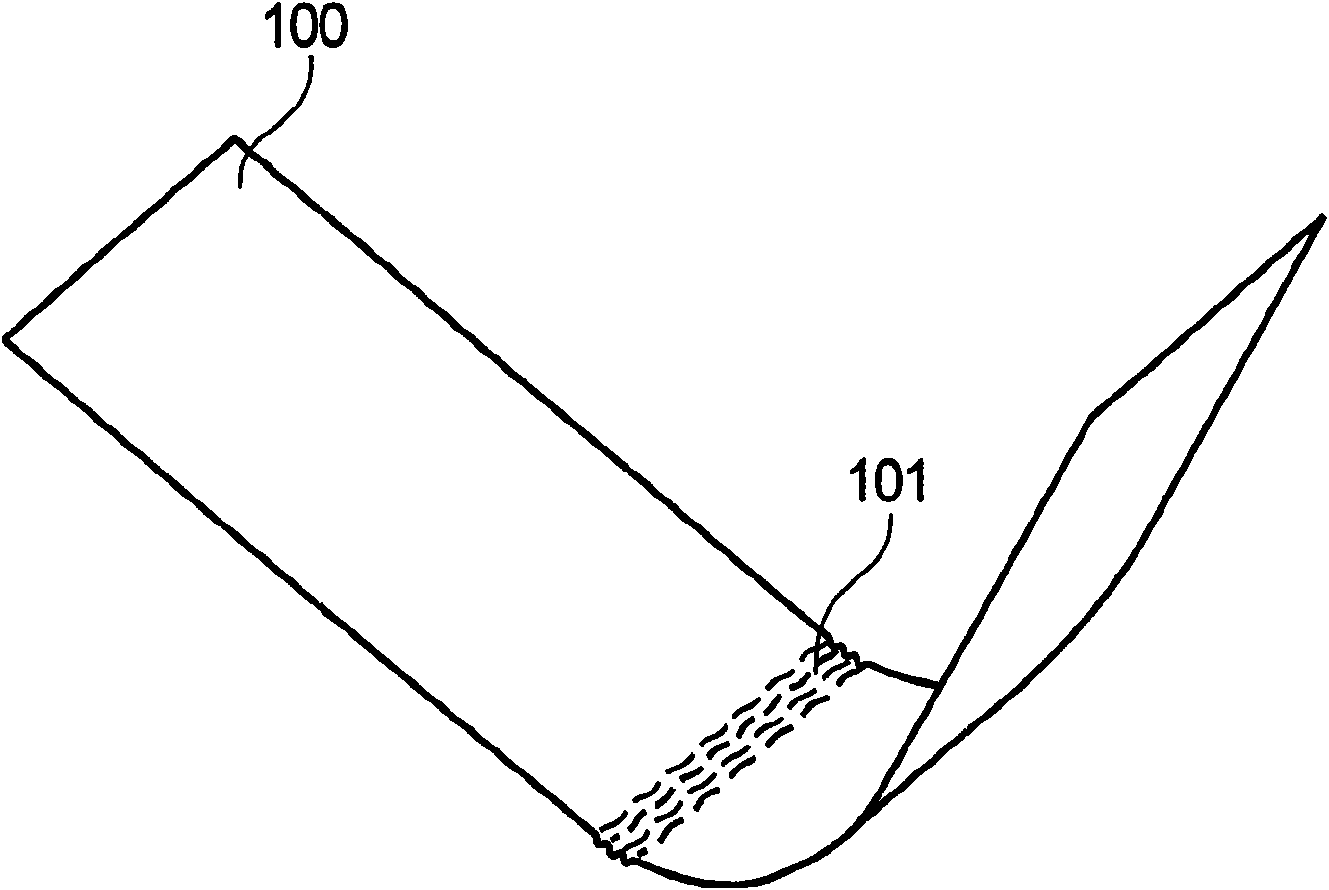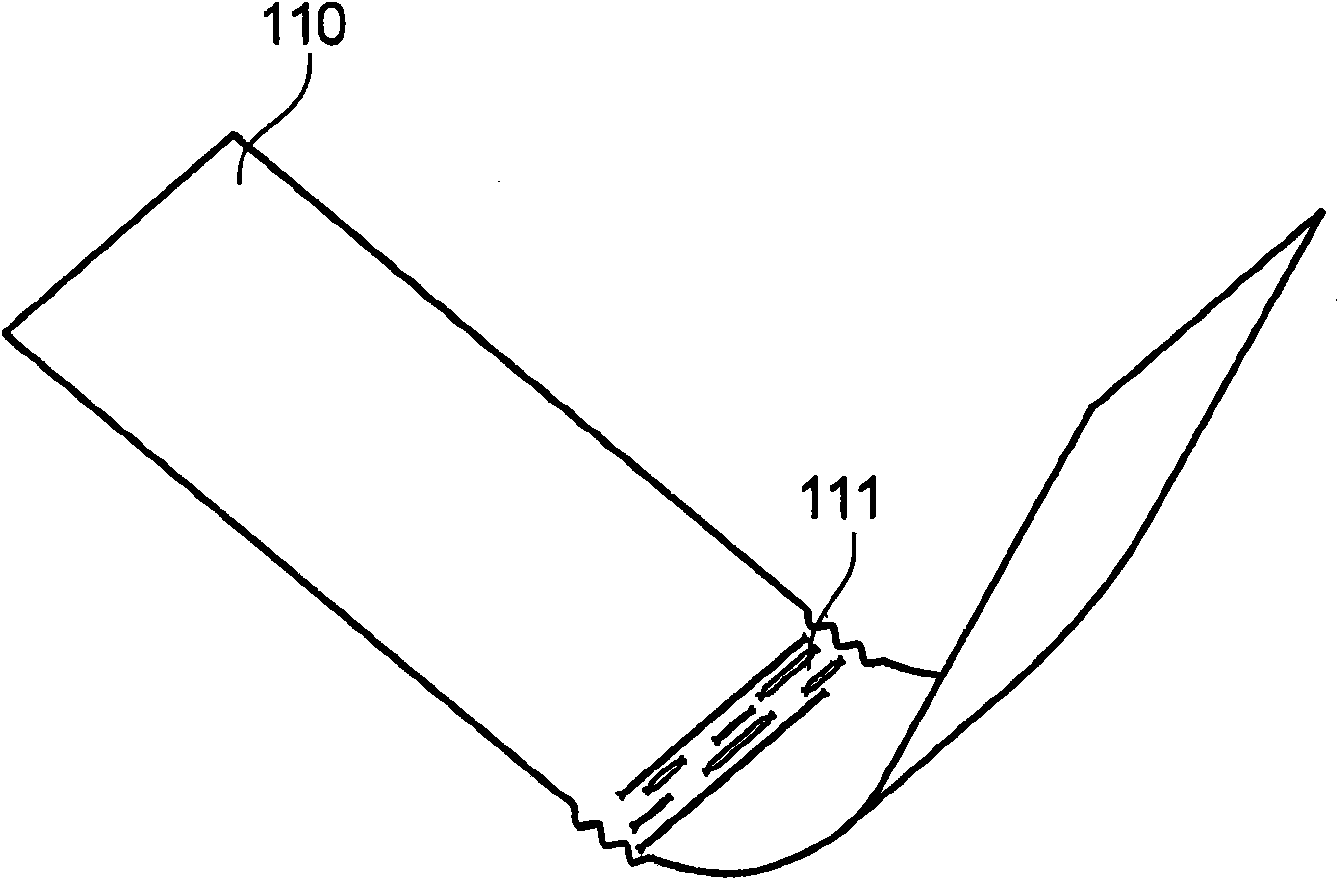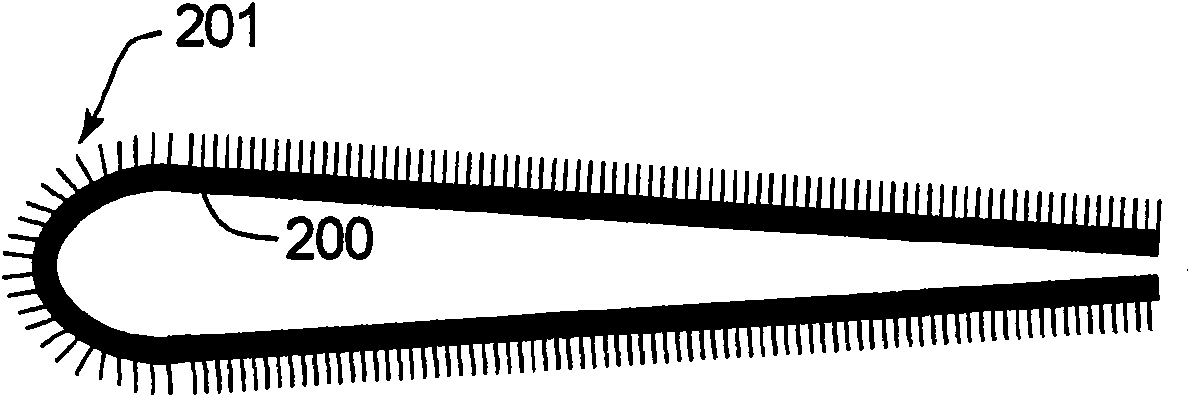Split leather product and manufacturing method therefor
A technology of split leather and products, which can be applied to layered products, rubber layered products, synthetic resin layered products, etc., and can solve problems such as lack of sense of luxury
- Summary
- Abstract
- Description
- Claims
- Application Information
AI Technical Summary
Problems solved by technology
Method used
Image
Examples
Embodiment 1
[0152] Melt spinning was performed on sea-island type mixed spun fibers having a polyethylene terephthalate (PET) resin (island component) and polyethylene (sea component) at a mass ratio of 50 / 50. Then, the obtained fibers were stretched, crimped, and cut to obtain staple fibers with a fineness of 4 dtex and a cut length of 51 mm.
[0153] After passing the obtained short fibers through a carding machine to form a web, a predetermined number of webs are laminated to form a layer by cross lapper. And, the overlapped web was needle-punched with a felting needle, thereby obtaining an entangled nonwoven fabric including sea-island type fibers.
[0154] Next, shrink the obtained entangled nonwoven in warm water, and after drying, obtain a smooth surface, a thickness of 2.2 mm, and a weight per unit area of 500 g / m by hot pressing. 2 Tangled non-woven fabric. Then, the smoothed entangled nonwoven fabric was impregnated with a polycarbonate-based polyurethane DMF solution (solid...
Embodiment 2
[0161] The epidermis with a thickness of about 0.2 mm obtained by cutting it thinner was used instead of the epidermis with a thickness of about 0.5 mm, and the rest was the same as in Example 1 to obtain a split skin product. The obtained split leather product had a thickness of 1.29 mm, a split skin thickness of 1.02 mm, a skin layer thickness of 0.2 mm (including an adhesive layer of 0.08 mm), and a resin layer thickness of 0.07 mm. The resulting split leather product was evaluated by the evaluation method described above. The results are shown in Table 1.
Embodiment 3
[0163]A non-woven fabric of pre-dyed polycarbonate-based polyurethane was used instead of coloring the surface of the thinned and bonded polycarbonate-based polyurethane by gravure coating, and a split leather product was obtained in the same manner as in Example 1. . The obtained split leather product had a thickness of 1.63 mm, a split skin thickness of 1.02 mm, a skin layer thickness of 0.58 mm, and a resin layer thickness of 0.03 mm. The resulting split leather product was evaluated by the evaluation method described above. The results are shown in Table 1.
PUM
| Property | Measurement | Unit |
|---|---|---|
| thickness | aaaaa | aaaaa |
| thickness | aaaaa | aaaaa |
| thickness | aaaaa | aaaaa |
Abstract
Description
Claims
Application Information
 Login to View More
Login to View More - R&D
- Intellectual Property
- Life Sciences
- Materials
- Tech Scout
- Unparalleled Data Quality
- Higher Quality Content
- 60% Fewer Hallucinations
Browse by: Latest US Patents, China's latest patents, Technical Efficacy Thesaurus, Application Domain, Technology Topic, Popular Technical Reports.
© 2025 PatSnap. All rights reserved.Legal|Privacy policy|Modern Slavery Act Transparency Statement|Sitemap|About US| Contact US: help@patsnap.com



